$249.99 Original price was: $249.99.$199.99Current price is: $199.99.
The Cinnamon Leatherback Bearded Dragon is a rare and stunning reptile with a distinct cinnamon coloration and unique leatherback scale texture. This captivating breed is highly sought after by reptile enthusiasts and is known for its friendly temperament, making it a great addition to any collection. The Cinnamon Leatherback Bearded Dragon is a captivating reptile species that has become increasingly popular among reptile enthusiasts in recent years. This unique breed is known for its distinctive appearance, friendly temperament, and fascinating behaviors.
Originating from Australia, can bearded dragons eat tomatoes the Cinnamon Leatherback Bearded Dragon is a type of Pogona vitticeps, which is a species of lizard native to the arid and semi-arid regions of Australia. In the wild, these dragons can be found basking on rocks, foraging for food, and occasionally displaying their characteristic head-bobbing behavior.
Cinnamon Leatherback Bearded Dragon
The Cinnamon Leatherback Bearded Dragon is a rare and stunning reptile with a distinct cinnamon coloration and unique leatherback scale texture. This captivating breed is highly sought after by reptile enthusiasts and is known for its friendly temperament, making it a great addition to any collection. The Cinnamon Leatherback Bearded Dragon is a captivating reptile species that has become increasingly popular among reptile enthusiasts in recent years. This unique breed is known for its distinctive appearance, friendly temperament, and fascinating behaviors.
Originating from Australia, the Cinnamon Leatherback Bearded Dragon is a type of Pogona vitticeps, which is a species of lizard native to the arid and semi-arid regions of Australia. In the wild, these dragons can be found basking on rocks, foraging for food, and occasionally displaying their characteristic head-bobbing behavior.
What sets the Cinnamon Leatherback Bearded Dragon apart from other bearded dragon species is its stunning appearance. They have unique leatherback skin, a cinnamon-colored base, and dark brown patches or stripes on their back and tail. Their facial features, including the “beard” of spiky scales on their throat, are also a distinguishing feature.
In addition to their unique appearance, Cinnamon Leatherback Bearded Dragons are known for their docile and friendly temperament, which makes them an ideal pet for both experienced and novice reptile owners. They also have a variety of fascinating behaviors, including head bobbing, How big do leatherback beardies get? arm waving, and brumation.
German giant citrus leatherback
Appearance: The Cinnamon Leatherback Bearded Dragon is easily recognizable by its beautiful cinnamon coloration, which is caused by a unique genetic mutation. Their scales are also unique, with a leatherback texture that feels different from the typical bearded dragon. They have a triangular-shaped heads, a spiky appearance, and a long tail. Adult dragons can grow up to two feet in length and weigh up to a pound. The Cinnamon Leatherback Bearded Dragon is a beautiful and unique species that boasts a distinctive appearance. They have a variety of physical characteristics that set them apart from other bearded dragon species.
Check Out – Emerald Tree Boa, Baby Suriname Redtail Boa
One of the most striking features of the Cinnamon Leatherback Bearded Dragon is its leatherback skin. This skin is softer and smoother than the scales of other bearded dragons and lacks the bumpy texture that is common among other species. The leatherback skin has a smooth, almost glossy appearance, How much is a leatherback bearded dragon worth? and is a distinguishing feature of this particular breed.
In addition to their unique skin, Cinnamon Leatherback Bearded Dragons also have a distinct coloration. Their base color is a light, creamy tan or cinnamon color, with darker brown patches or stripes on their back and tail. Their undersides are typically a lighter color, cinnamon dunner leatherback bearded dragons ranging from pale beige to white. This coloring is what gives them their name, female hypo citrus tiger as they resemble the color of cinnamon.
Cinnamon Leatherback Bearded Dragons also have distinct facial features, including their characteristic “beard” of spiky scales on their throat. They also have a row of spiky scales running down their back and tail, which they can puff up in defense or to regulate their body temperature.
Overall, the Cinnamon Leatherback Bearded Dragon is a stunning and unique species that makes a wonderful addition to any reptile lover’s collection. Their distinctive appearance, leatherback bearded dragons pogona vitticeps with leatherback skin and cinnamon coloring, sets them apart from other bearded dragon species and makes them a true standout in the world of reptiles.
Habitat: In their natural habitat, dunner leatherback bearded dragons pogona the Cinnamon Leatherback Bearded Dragon can be found in the arid and semi-arid regions of Australia. They are ground-dwelling and require a spacious enclosure with a warm and dry environment. A basking spot with a temperature of 100-110°F is crucial, as well as a cooler side of the enclosure with a temperature range of 80-85°F. A UVB light is also important for their health and well-being.
Check Out – Spiny Tail Iguana, Cayman Brac Iguana
Diet: The Cinnamon Leatherback Bearded Dragon is an omnivore, with a diet consisting of both insects and vegetation. Crickets, mealworms, and dubia roaches are common staples in their diet, dragons pogona vitticeps for sale along with a variety of greens such as collard greens, kale, and dandelion greens. Supplementation with calcium and vitamins is also recommended.
Temperament: One of the most attractive features of the Cinnamon Leatherback Bearded Dragon is its friendly and docile temperament. They are social animals and enjoy interaction with their owners. They can even be trained to recognize their name and come to their owners when called. This makes them an excellent choice for reptile enthusiasts of all experience levels.
Care Requirements: Proper care is essential for the health and happiness of the Cinnamon Leatherback Bearded Dragon. Here are some care requirements to keep in mind when caring for this stunning reptile:
1. Enclosure: Cinnamon Leatherback Bearded Dragons require a spacious enclosure with enough room for them to move around and climb. A minimum enclosure size of 40 gallons is recommended for adult dragons. The enclosure should also have a basking spot with a temperature of 100-110°F, a cooler side with a temperature range of 80-85°F, and a UVB light.
2. Diet: The Cinnamon Leatherback Bearded Dragon is an omnivore, which means that its diet should include both insects and vegetation. Crickets, mealworms, and dubia roaches are common staples in their diet, along with a variety of greens such as collard greens, kale, and dandelion greens. It is also recommended to dust their food with calcium and vitamin supplements.
3. Hydration: Cinnamon Leatherback Bearded Dragons need access to fresh water at all times. You can provide water in a shallow dish, or through a dropper or syringe for younger dragons.
4. Handling: These reptiles are known for their docile and friendly temperament, but they can still become stressed if not handled properly. It’s important to handle them gently and frequently to promote bonding and prevent stress. Always support their body and avoid grabbing them by the tail.
5. Veterinary Care: Regular check-ups with a veterinarian experienced in reptile care are important to ensure the Cinnamon Leatherback Bearded Dragon is healthy and free of any potential health issues. Signs of illness include lethargy, loss of appetite, respiratory issues, Can bearded dragons eat apples or unusual fecal matter.
6. Overall, providing proper care for the Cinnamon Leatherback Bearded Dragon is essential to keep them healthy and happy. With a suitable enclosure, a balanced diet, regular hydration, proper handling, and regular veterinary care, these stunning reptiles can live long and healthy life as beloved pets.
In conclusion, the Cinnamon Leatherback Bearded Dragon is a rare and captivating reptile with a stunning appearance and friendly temperament. Their unique cinnamon coloration and leatherback scale texture make them a highly sought-after breed by reptile enthusiasts. With proper care and attention, What is the rarest bearded dragon color? they can live a long and healthy life as a beloved member of any reptile lover’s collection.
Can bearded dragons eat apples
Yes, bearded dragons can eat apples, but they should be given in moderation. Apples can be a part of a bearded dragon’s varied diet, providing some nutritional benefits. However, it’s important to remember that bearded dragons are primarily insectivores, and their diet should primarily consist of insects and leafy greens.
When offering apples to your bearded dragon, make sure to prepare them properly. Remove the apple seeds, as they contain small amounts of cyanide, which can be harmful to reptiles. Cut the apple into small, bite-sized pieces to make it easier for your bearded dragon to eat.
can bearded dragons eat tomatoes
Bearded dragons can eat tomatoes, but they should be given in moderation. Tomatoes are not toxic to bearded dragons, but they should be considered as an occasional treat rather than a staple food in their diet.
Tomatoes contain a moderate amount of natural sugars and acids, so they should be given sparingly to prevent digestive issues and potential weight gain. It’s important to note that the green parts of the tomato plant, such as the stems and leaves, are not safe for bearded dragons to consume and should be avoided.
When feeding tomatoes to your bearded dragon, it’s best to offer ripe tomatoes that are free from any pesticides or chemicals. Wash the tomato thoroughly and cut it into small, bite-sized pieces that are easy for your bearded dragon to eat.
Remember, a bearded dragon’s diet should primarily consist of insects and leafy greens. These provide the essential nutrients they need for proper growth and health. If you choose to offer tomatoes as an occasional treat, ensure they are part of a balanced and varied diet that includes other suitable foods for your bearded dragon.
Apples are high in natural sugars, so feeding them in excess can lead to weight gain and potential digestive issues. It’s recommended to offer apples as an occasional treat rather than a regular part of their diet. Be sure to monitor your bearded dragon’s overall diet and provide a balanced mix of appropriate foods to ensure their nutritional needs are met.
3 reviews for Cinnamon Leatherback Bearded Dragon
Add a review Cancel reply
Related products
Bearded Dragons
Bearded Dragons
Bearded Dragons
Bearded Dragons
Bearded Dragons
Bearded Dragons
Bearded Dragons
Iguanas


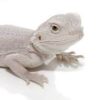


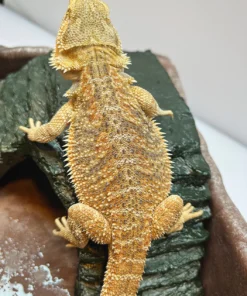


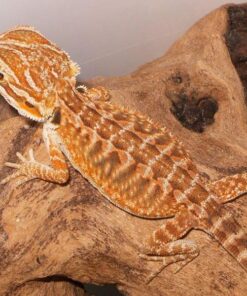

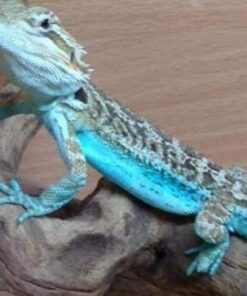
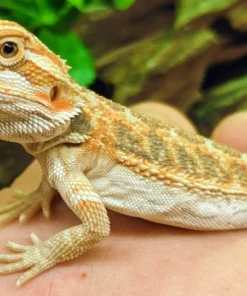

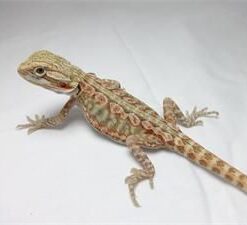
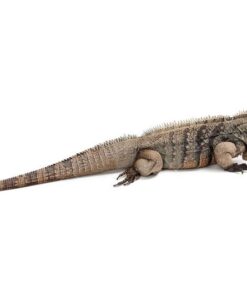
Jack –
It’s a perfect addition to my reptile family
Jack –
I’m fascinated by the cinnamon leatherback bearded dragon’s smooth scales and rich color .Highly recommended Florida REPTILES
Jude –
I’m in love with my citrus bearded dragon’s vibrant orange and yellow hues.